Keping Long
AI-aided Traffic Control Scheme for M2M Communications in the Internet of Vehicles
Apr 12, 2022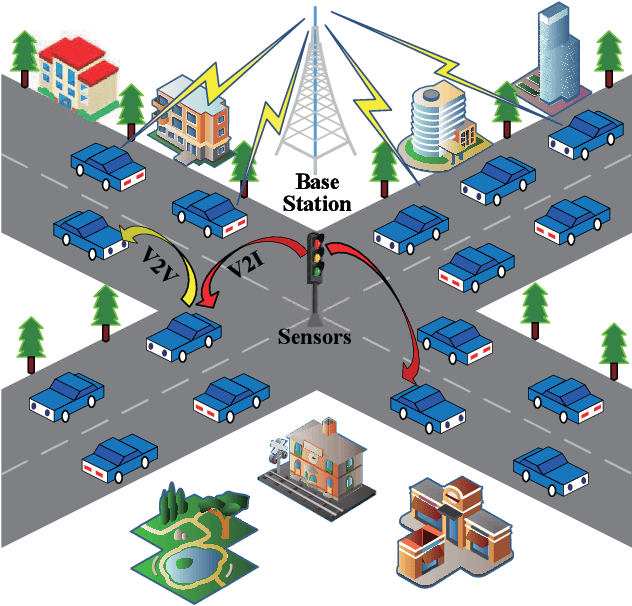
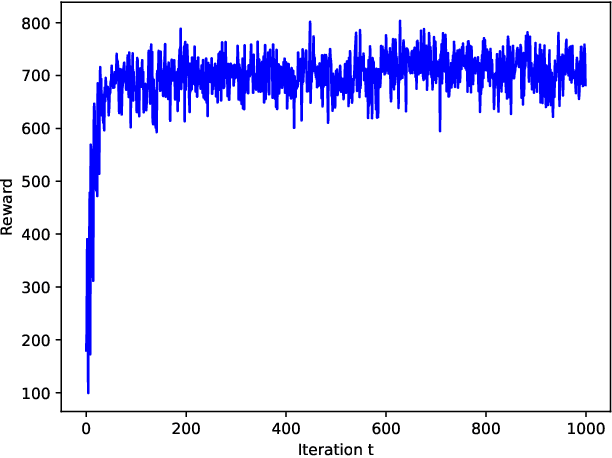

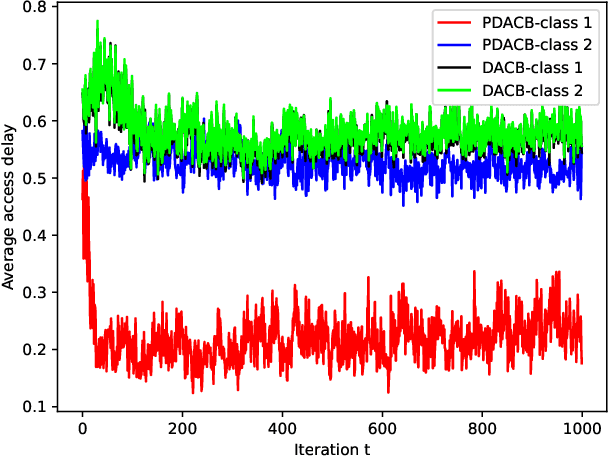
Abstract:Due to the rapid growth of data transmissions in internet of vehicles (IoV), finding schemes that can effectively alleviate access congestion has become an important issue. Recently, many traffic control schemes have been studied. Nevertheless, the dynamics of traffic and the heterogeneous requirements of different IoV applications are not considered in most existing studies, which is significant for the random access resource allocation. In this paper, we consider a hybrid traffic control scheme and use proximal policy optimization (PPO) method to tackle it. Firstly, IoV devices are divided into various classes based on delay characteristics. The target of maximizing the successful transmission of packets with the success rate constraint is established. Then, the optimization objective is transformed into a markov decision process (MDP) model. Finally, the access class barring (ACB) factors are obtained based on the PPO method to maximize the number of successful access devices. The performance of the proposal algorithm in respect of successful events and delay compared to existing schemes is verified by simulations.
Proximal Policy Optimization-based Transmit Beamforming and Phase-shift Design in an IRS-aided ISAC System for the THz Band
Mar 21, 2022



Abstract:In this paper, an IRS-aided integrated sensing and communications (ISAC) system operating in the terahertz (THz) band is proposed to maximize the system capacity. Transmit beamforming and phase-shift design are transformed into a universal optimization problem with ergodic constraints. Then the joint optimization of transmit beamforming and phase-shift design is achieved by gradient-based, primal-dual proximal policy optimization (PPO) in the multi-user multiple-input single-output (MISO) scenario. Specifically, the actor part generates continuous transmit beamforming and the critic part takes charge of discrete phase shift design. Based on the MISO scenario, we investigate a distributed PPO (DPPO) framework with the concept of multi-threading learning in the multi-user multiple-input multiple-output (MIMO) scenario. Simulation results demonstrate the effectiveness of the primal-dual PPO algorithm and its multi-threading version in terms of transmit beamforming and phase-shift design.
Decentralized Baseband Processing with Gaussian Message Passing Detection for Uplink Massive MU-MIMO Systems
May 22, 2021



Abstract:Decentralized baseband processing (DBP) architecture, which partitions the base station antennas into multiple antenna clusters, has been recently proposed to alleviate the excessively high interconnect bandwidth, chip input/output data rates, and detection complexity for massive multi-user multiple-input multiple-output (MU-MIMO) systems. In this paper, we develop a novel decentralized Gaussian message passing (GMP) detection for the DBP architecture. By projecting the discrete probability distribution into a complex Gaussian function, the local means and variances iteratively calculated in each antenna cluster are fused to generate the global symbol beliefs based on the proposed message fusion rule in the centralized processing unit. We present the framework and analysis of the convergence of the decentralized GMP detection based on state evolution under the assumptions of large-system limit and Gaussian sources. Analytical results corroborated by simulations demonstrate that nonuniform antenna cluster partition scheme exhibits higher convergence rate than the uniform counterpart. Simulation results illustrate that the proposed decentralized GMP detection outperforms the recently proposed decentralized algorithms.
Cognitive Internet of Things: A New Paradigm beyond Connection
Mar 11, 2014
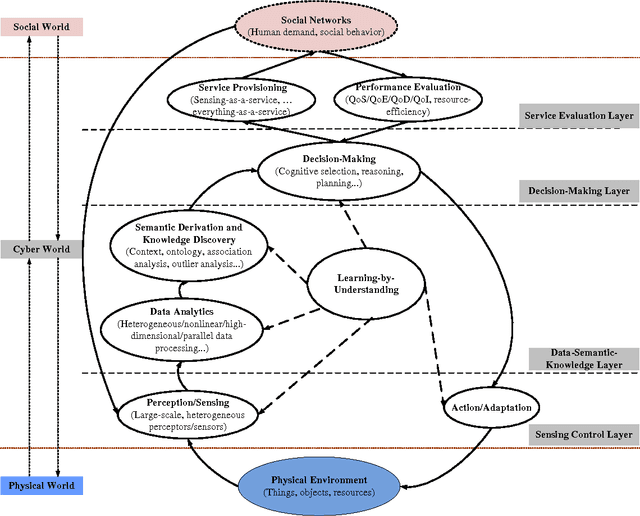
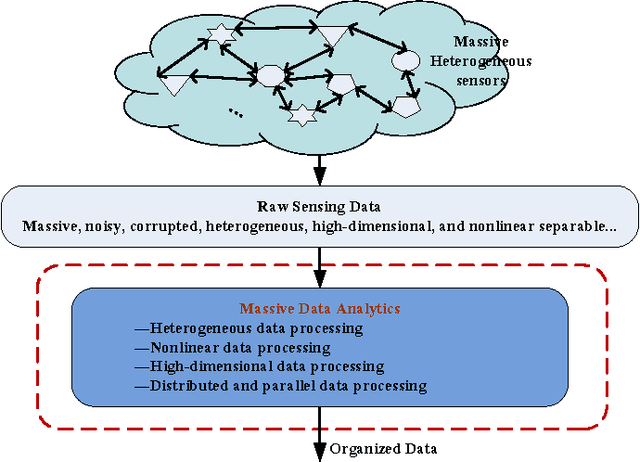
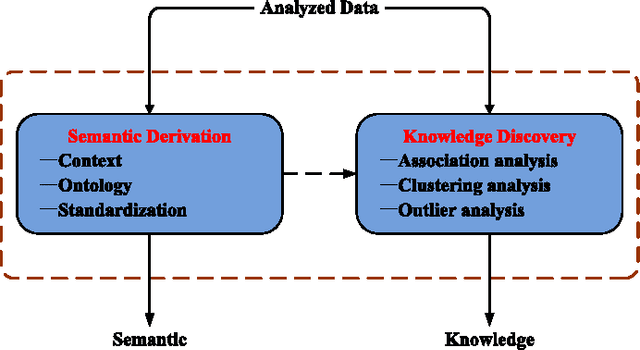
Abstract:Current research on Internet of Things (IoT) mainly focuses on how to enable general objects to see, hear, and smell the physical world for themselves, and make them connected to share the observations. In this paper, we argue that only connected is not enough, beyond that, general objects should have the capability to learn, think, and understand both physical and social worlds by themselves. This practical need impels us to develop a new paradigm, named Cognitive Internet of Things (CIoT), to empower the current IoT with a `brain' for high-level intelligence. Specifically, we first present a comprehensive definition for CIoT, primarily inspired by the effectiveness of human cognition. Then, we propose an operational framework of CIoT, which mainly characterizes the interactions among five fundamental cognitive tasks: perception-action cycle, massive data analytics, semantic derivation and knowledge discovery, intelligent decision-making, and on-demand service provisioning. Furthermore, we provide a systematic tutorial on key enabling techniques involved in the cognitive tasks. In addition, we also discuss the design of proper performance metrics on evaluating the enabling techniques. Last but not least, we present the research challenges and open issues ahead. Building on the present work and potentially fruitful future studies, CIoT has the capability to bridge the physical world (with objects, resources, etc.) and the social world (with human demand, social behavior, etc.), and enhance smart resource allocation, automatic network operation, and intelligent service provisioning.
 Add to Chrome
Add to Chrome Add to Firefox
Add to Firefox Add to Edge
Add to Edge